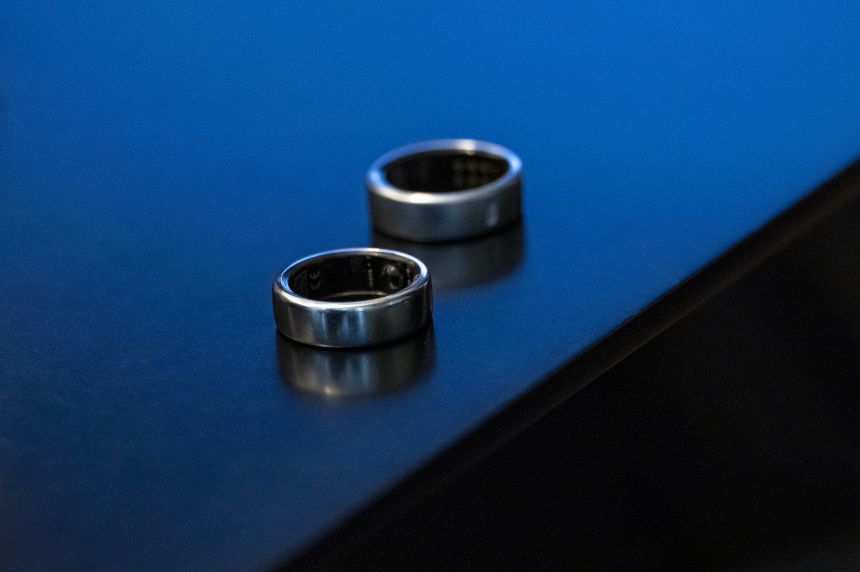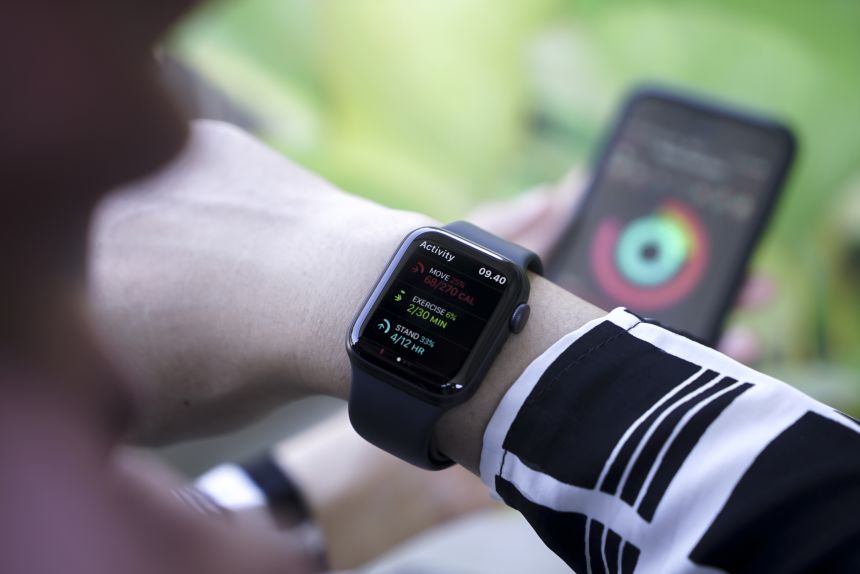Tweet
Email
Link
Nikki Gooding didn’t know what was happening, but something was up.
In early December, the 27-year-old aesthetic nurse practitioner had started feeling off. She was exhausted, even though she was getting plenty of sleep. Despite her love of food, her appetite was nearly gone. And she’d wake up in the middle of the night drenched in sweat. No matter what she did, she felt like she was caught in a never-ending hangover.
At the same time, her Oura Ring, a health tracking smart ring that claims to give wearers a “holistic picture” of their health, was also giving her strange reports. Her basal body temperature was consistently higher than normal, far from the natural ups and downs she’d become accustomed to. And she kept getting alerts that her ring was sensing “major signs” of a mysterious something straining her body.
After a few weeks, she discovered a lump on the back of her neck. She went to her primary care provider, told her the symptoms, and showed her the data she’d collected from her ring. The diagnosis came later: Hodgkin lymphoma.
Gooding recognizes she probably would have figured out the problem eventually, without the help of her ring. But the ring’s alerts made her take the condition more seriously, she said, and validated her physical signs.
“Being a nurse, I was just kind of like ‘Oh, it’s probably nothing. I’m probably just fighting something viral, I’ll just wait for it to go away,’” Gooding said. “It kind of was like, okay, you’re not crazy, something is actually wrong.”
After she posted a video about her experiences to TikTok, the comments filled with others reporting similar experiences with their trackers, which they said foresaw everything from pregnancies to blood clots. Elsewhere, paralympian Hunter Woodhall credited his Oura Ring to alerting him to his appendicitis, while others have been notified of Covid-19 infections and other illnesses through similar health and fitness trackers.
Almost one in three Americans uses some type of tracker, and today’s top-of-the-line devices can measure sleep oxygen levels, stress levels, body temperature, menstrual cycles, heart rate variability and even glucose levels. These aren’t the step and calorie counters of yore; they’re sophisticated medical technology. And they’re increasingly being used as a window into our internal health.
Sharon Bergquist, an internist at Emory Healthcare and an associate professor at Emory University School of Medicine, has seen a rise in patients using these trackers. A few have even come in because of alerts they’ve received, much like Gooding. Their concerns are wide-ranging — some have come in after receiving alerts of possible arrhythmias, others have concerns about sleep or possible apnea.
In the absence of pain or other alarming symptoms, patients usually seek medical help when something is off visually, she said — think of swelling that won’t go down or unexpected bruising. With trackers, that chain of events is changing.

“These trackers can hint that there could be something wrong, sometimes before there are visible changes that a person would detect,” Bergquist said. “That just can speed up the attention.”
But Bergquist has seen some false alarms. Patients sometimes think their heart rate is off when it’s fine; their tracker’s depicted sleep inconsistencies aren’t apnea; or variations in their pulse data are not clinically significant.
There is still a benefit to having access to the objective data a tracker can provide. Our perceptions of our own habits tend to be skewed, Bergquist said. We tend to assume we’re healthy people. Having daily feedback about what’s going on internally can help nudge us toward healthy habits, in ways our own beliefs or opinions can’t.
And yet these wearable trackers, with all their data and quantification, feed a desire for a more scientific look into one’s personal health. There may be a sense that something is “sneaking up on us in our bodies,” said Anna Kirkland, a professor who studies health and discrimination at the University of Michigan — like a disease we don’t know about, or a defect we can’t feel.
While these devices are imperfect, they give users the impression that the technology can provide some notion of control. But even with the best trackers money can buy, there’s a limit to what we can accomplish alone, Kirkland said.
“You can do all the right things, die anyway,” Kirkland said.
Part of the driving force behind these trackers is the nature of the diseases we’re facing today. In the past, common causes of death were infectious diseases, maladies like bronchitis or tuberculosis. Now, the diseases that are killing the most people are conditions like heart disease, often linked to poor diet and lack of exercise. That shift is part of what makes wearable fitness monitors so appealing—– there’s a feeling that these are lifestyle maladies, which could be within our control.
But there’s a limit to how many new insights a device can provide. If you’re buying a device because you want to walk more and need a step tracker, you likely already know you live a sedentary lifestyle, Kirkland said. While a watch, or a ring, might track that for you, it can’t make more leisure time in your day, nor can it give you access to a park or another safe place to walk. Ditto for access to fresh, healthy food, clean air and so on.

Therein lies the problem. While these products can be helpful, they contribute to the individualist idea that we alone — if only we carefully monitor the daily findings of a $300 gadget — can bring about our best, healthiest selves. And that idea, Kirkland said, is just not correct.
“Health depends on a whole host of governmental and communal and economic factors that individuals alone can’t control,” she said.
And what about all the metrics we can’t concretely measure? Even while the data may seem within our control, overrelying on those numbers can bring issues. While tracking devices can help with getting habits “in the right ballpark,” Bergquist said, some things can’t be tracked. Intuitive qualities like mental and spiritual health can’t be quantified by a watch or ring, yet they affect our day-to-day existence. There can also be contradictions: On some days Bergquist has woken up feeling refreshed, but her tracker will tell her she didn’t get enough deep sleep.
Despite all the science and the data and the numbers, nothing beats one’s own intuition.
“I believe myself and my body more than I’m going to believe the device,” Bergquist said.
Gooding, the nurse, first bought her ring to help track her menstrual cycle. She’d just gotten off oral contraceptives, and the ring was a way for her to understand her cycle and her body’s ups and downs. It happened to give her a wider window than she’d thought. Now, even while she is in chemotherapy, the ring’s data still validates her own instincts.
“It doesn’t replace the need for an actual person,” she said. “It’s just a nice tool to have.”